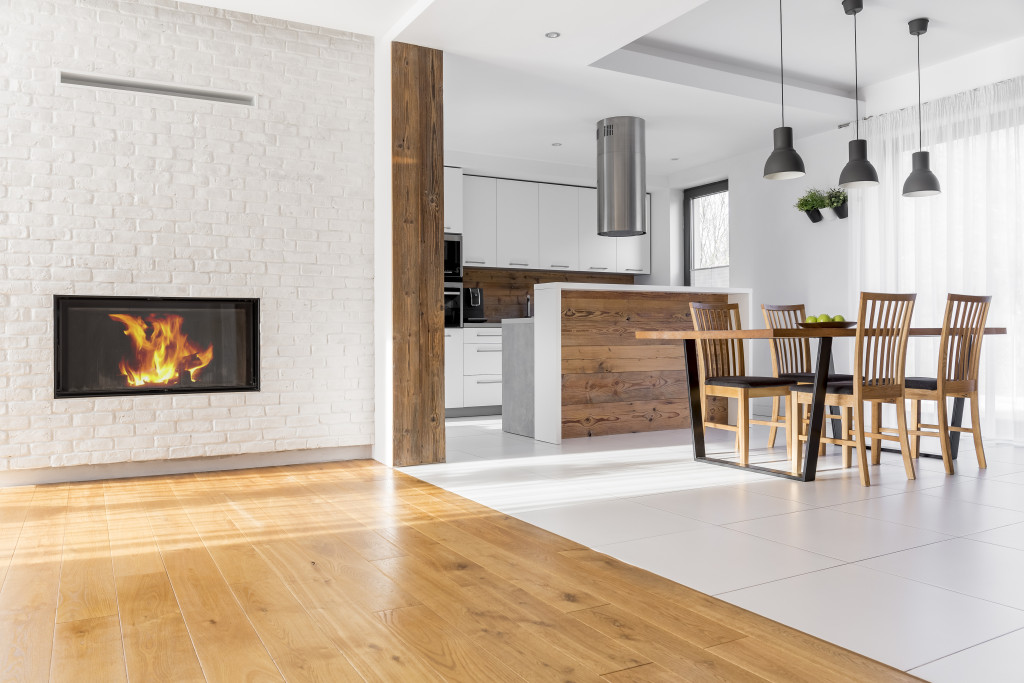- Establish a cohesive color scheme that reflects your style and mood.
- Maximize natural light and use artificial lighting for a brighter and inviting space.
- Declutter and organize your home for a visually appealing and functional living space.
- Incorporate natural elements like plants, wood, and stone to bring nature indoors.
- Upgrade your windows with energy-efficient options for both aesthetic appeal and functionality.
Your home is a reflection of your personality and style, and creating a space that is both functional and aesthetically pleasing can greatly enhance your overall well-being. Whether you’re looking to update your current home design or start from scratch, some tips and techniques can help you improve your overall home design. This guide will explore five effective strategies to transform your living space into a place you love coming home to.
1. Establish a Cohesive Color Scheme
One of the easiest ways to improve your home design is by establishing a cohesive color scheme throughout your space. Choose a color palette that reflects your style and complements the existing architecture and furnishings. Consider using a neutral base color and adding pops of color through accessories and accent pieces.
Consider the mood you want to create in each room when selecting colors. Soft, soothing colors like blues and greens can create a calm and relaxing atmosphere in bedrooms and bathrooms. In contrast, vibrant colors like yellows and oranges can energize and invigorate living spaces.
2. Maximize Natural Light and Use Proper Lighting

Lighting plays a crucial role in enhancing the ambiance and functionality of your home. Natural light makes your home feel brighter and more spacious and has numerous health benefits.
Here are some tips on how to maximize natural light:
Importance of Natural Light
Natural light not only illuminates your home but also has numerous health benefits. Exposure to natural light helps regulate your circadian rhythm, which controls your sleep cycle and overall well-being. It also boosts vitamin D production, which is essential for bone health and immune system functioning. Maximizing natural light will enhance your home’s aesthetic appeal and contribute to your overall health and well-being.
Unobstructed Windows
To maximize natural light, ensure that your windows are unobstructed. Keep furniture or heavy drapes away from the windows to allow adequate light to filter in. Use sheer curtains or blinds that can be easily opened and closed. This will allow more natural light into your home and give you control over the amount of light entering a room.
Reflective Surfaces
Reflective surfaces, such as mirrors or glossy finishes, can help bounce natural light around a room, making it feel brighter and more spacious. Strategically placing mirrors opposite windows can reflect natural light into the room, maximizing its impact. Similarly, incorporating glossy or metallic finishes in your decor can reflect natural light, creating a brighter and more inviting space.
Proper Artificial Lighting
While natural light should be maximized, having proper artificial lighting in your home is also essential. Layering different types of lighting, such as ambient, task, and accent lighting, will create depth and add visual interest to your space. Use warm and soft lighting in living spaces to create a cozy atmosphere, while brighter task lighting suits functional areas like the kitchen or home office. Installing dimmer switches will also allow you to adjust the lighting according to the time of day and desired mood. Proper artificial lighting is crucial for creating a well-lit and functional home environment.
3. Declutter and Organize
A clutter-free and organized home instantly feels more inviting and visually appealing. Take the time to declutter your space by removing unnecessary or unnecessary items. Clear off countertops, tabletops, and surfaces to create a sense of openness. Invest in storage solutions like shelves, bins, and baskets to keep everyday items organized and out of sight.
When organizing, consider both functionality and aesthetics. Arrange items in a way that makes them easily accessible while also creating visually pleasing displays. Group similar items together and use decorative storage solutions to add style to your space.
4. Incorporate Natural Elements

Bringing nature indoors can significantly improve the overall design of your home. Incorporate natural elements like plants, flowers and natural materials like wood, stone, and rattan. Plants add a touch of greenery, purify the air, and create a sense of calmness.
Consider adding natural textures through furniture, flooring, and accessories to create warmth and depth in your space. Incorporate elements like wooden furniture, woven rugs, and stone accents to bring a sense of nature indoors.
5. Upgrade Your Windows
Investing in your windows can significantly impact your home design’s aesthetic appeal and functionality. New windows can improve energy efficiency, noise reduction, and security. Work with a window contractor so that the installation process is done correctly. A contractor can also help you choose the best type of windows for your home, considering your budget and specific needs.
Also, incorporate window treatments such as curtains, blinds, or shades that provide privacy, control light, and add a touch of elegance to your space. Choose window coverings that match your color scheme and design aesthetic to create a harmonious look.
In Closing
Improving your overall home design is an exciting and rewarding process. You can transform your living space into a beautiful and functional sanctuary by establishing a cohesive color scheme, maximizing natural light, decluttering and organizing, incorporating natural elements, and upgrading your windows. Remember to personalize your design choices to reflect your unique style and preferences. With these tips, you can create a home that feels like yours.





